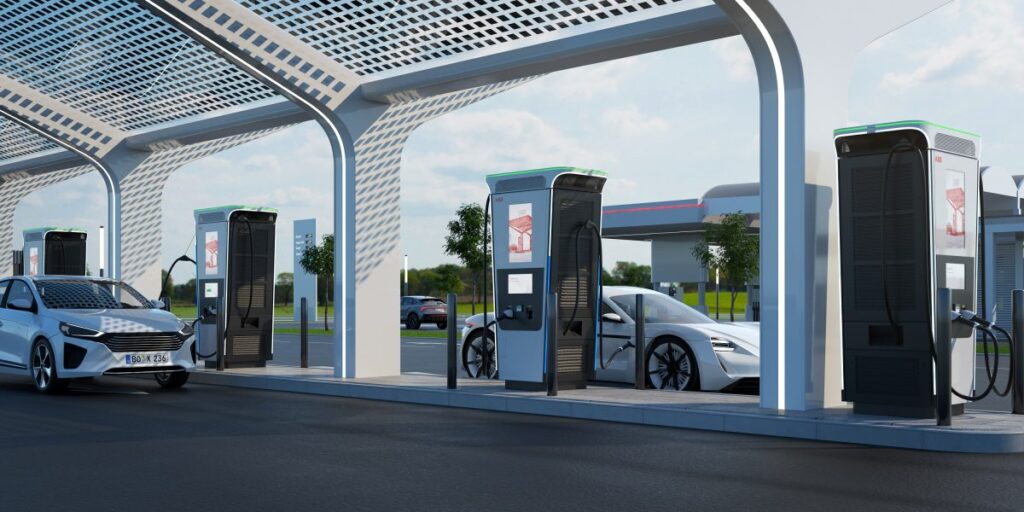Demand generation marketing is a holistic and data-driven strategy designed to spark interest and awareness in a company’s offerings and guide potential buyers through the journey from discovery to conversion. Unlike lead generation, which often focuses solely on collecting contact information, demand generation marketing nurtures relationships and builds trust over time through consistent, targeted engagement. It encompasses a wide array of marketing tactics—from educational content and social media outreach to retargeting and email automation—all tailored to align with the buyer’s needs and intent at every stage of the sales funnel. By creating value and addressing customer pain points upfront, this approach establishes your brand as a trusted authority and makes future sales conversations more meaningful and effective. In a crowded digital marketplace, demand generation marketing ensures your brand isn’t just seen, but remembered and preferred when buying decisions are made.
Importance of Demand Generation Marketing in Today’s Market
Today’s buyers are empowered with access to more information and options than ever before. Traditional push marketing tactics are no longer sufficient in this environment. Instead, businesses must earn the attention of potential customers by providing genuine value and insights. This is where Lead Generation Marketing excels—it meets the modern buyer where they are, offering content and interactions that are relevant, timely, and helpful. It doesn’t pressure prospects but rather educates and informs them, allowing them to make confident and informed decisions. This method of marketing creates deeper emotional and intellectual connections with a brand, which ultimately leads to higher conversion rates and increased customer lifetime value. Additionally, demand generation marketing supports the long-term health of your sales pipeline, ensuring that it’s consistently filled with qualified prospects who are already warmed up and ready to engage with your team. It’s not just about immediate sales—it’s about building momentum that leads to sustainable business growth.
Key Components of Demand Generation Marketing
A successful demand generation marketing strategy is built upon several foundational elements that work together to create a seamless experience for potential buyers. These components include compelling content tailored to the buyer’s journey, targeted email campaigns, strategic paid advertising, engaging webinars or events, organic search visibility through SEO, and robust marketing automation tools that allow for personalization at scale. Each element plays a distinct role in attracting, engaging, and converting leads. For example, informative blog posts might drive traffic and awareness, while case studies and whitepapers offer deeper insight and support decision-making. Paid search and social campaigns can extend your reach to new audiences, and retargeting ensures you’re staying top of mind. By analyzing how users interact across these touchpoints, marketers can fine-tune messaging and optimize results. Ultimately, the integration of these components allows Lead Generation Marketing to function as a well-oiled engine that consistently delivers qualified leads into the sales funnel.
Role of Content in Demand Generation Marketing
Content is the cornerstone of demand generation marketing because it acts as both a magnet and a nurturing tool. Quality content educates prospects, answers their questions, and positions your brand as an expert in the industry. Through various formats—such as blog posts, videos, podcasts, infographics, eBooks, and case studies—content meets prospects where they are in their journey and helps guide them toward a purchase. It’s not just about frequency but about relevance and depth; each piece should address specific challenges or interests of your target audience. For example, a top-of-funnel blog post may introduce a concept or challenge, while a bottom-of-funnel webinar or ROI calculator might help decision-makers understand the value of your solution. Effective content supports SEO efforts, drives organic traffic, and extends the reach of your brand. When used strategically, content turns demand generation marketing from a passive outreach method into a dynamic conversation that builds trust and loyalty over time.
Technology and Tools Empowering Demand Generation Marketing
Technology plays a crucial role in the success of Lead Generation Marketing by enabling precision, scalability, and insight. From marketing automation platforms like Marketo, HubSpot, and Pardot to customer relationship management (CRM) systems like Salesforce, these tools streamline campaigns and provide real-time visibility into lead behaviors and performance. Data analytics platforms help marketers understand what’s working and where to optimize, while AI tools improve segmentation, recommend content, and predict future engagement. With the integration of these technologies, marketers can execute multichannel campaigns with personalization that resonates. For instance, based on a prospect’s previous interactions, email content and timing can be automatically tailored to their interests and stage in the buying cycle. Retargeting platforms can then reinforce messaging across digital channels. The right stack of marketing technologies not only saves time but also maximizes return on investment by ensuring demand generation marketing efforts are smart, efficient, and continuously improving.
Aligning Sales and Marketing for Effective Demand Generation Marketing

Demand generation marketing cannot reach its full potential without strong collaboration between sales and marketing teams. Both departments must be aligned in terms of goals, lead definitions, and messaging to ensure a seamless customer experience. This begins with creating a unified lead scoring system that identifies when a lead is ready to be handed off from marketing to sales. Regular meetings and feedback loops help refine campaign strategies and improve targeting. When sales teams understand the context and content prospects have engaged with, they can tailor their outreach and build more meaningful relationships. Conversely, marketing can use sales insights to adjust messaging, improve lead quality, and close the feedback loop. This alignment ensures that prospects aren’t just handed off as cold leads but are nurtured and informed, which shortens the sales cycle and increases win rates. Demand generation marketing is most successful when it’s a shared responsibility, with both teams invested in long-term relationship-building rather than short-term quotas.
Measuring the Success of Demand Generation Marketing
Success in Lead Generation Marketing must be tracked with meaningful metrics that go beyond vanity numbers. While metrics like email open rates or social likes are useful for initial analysis, deeper insights come from tracking conversion rates, customer acquisition cost (CAC), marketing qualified leads (MQLs), sales qualified leads (SQLs), and pipeline contribution. Attribution models help determine which channels or content pieces have the greatest influence on conversions, allowing marketers to allocate budget effectively. Additionally, engagement metrics like time on site, bounce rate, and content interaction reveal how prospects are moving through the funnel. Using tools like Google Analytics, HubSpot, or Tableau, teams can visualize campaign performance and identify patterns. A/B testing further enhances these efforts by revealing what messaging, timing, or channels resonate best. Ultimately, measurement isn’t just about proving ROI—it’s about continuously optimizing the demand generation marketing strategy to ensure it delivers increasing value over time.
Common Challenges in Demand Generation Marketing
Even the best strategies face hurdles, and demand generation marketing is no exception. One of the biggest challenges is breaking through content fatigue; with so many brands producing content, it’s difficult to stand out. To address this, companies must focus on delivering unique insights, bold perspectives, and genuinely helpful resources that resonate with their audience. Another challenge is aligning internal teams around shared goals and definitions—without this, marketing might pass unqualified leads to sales, leading to frustration and missed opportunities. Data fragmentation is also a major issue, especially when different platforms don’t communicate effectively. Without a unified view of the customer, it’s difficult to track engagement accurately. Budget constraints may limit experimentation, and keeping up with rapidly changing consumer behaviors requires constant vigilance. However, with proper planning, consistent communication, and investment in the right tools and talent, these challenges can be overcome. Demand generation marketing is not a quick fix—it’s a long-term investment that rewards persistence and strategic thinking.
Demand Generation Marketing vs. Lead Generation
Though often used interchangeably, demand generation marketing and lead generation serve different purposes and timeframes. Lead generation is more transactional, often focused on collecting contact details through gated content or promotions. It’s typically a short-term tactic aimed at building a database. Demand generation marketing, by contrast, is focused on creating awareness and interest even before someone is ready to submit a form or talk to sales. It’s about warming up the audience, nurturing relationships, and positioning the brand as a trusted advisor. Think of demand generation as the broader umbrella under which lead generation operates. For example, a podcast that discusses industry trends may not generate leads directly, but it builds demand by showcasing your expertise and keeping your brand top of mind. A healthy marketing strategy integrates both—using demand generation marketing to build awareness and trust, and lead generation to capture and convert that interest into sales opportunities.
Building a Long-Term Strategy with Lead Generation Marketing
Demand generation marketing thrives on consistency, planning, and adaptability. It’s not a one-off campaign, but an ongoing commitment to educate, engage, and build trust with your target audience. Long-term success requires clearly defined buyer personas, a content strategy that maps to the buyer’s journey, and a cadence of campaigns that reinforce brand value. Marketers must regularly audit content to ensure it remains relevant and effective. Emphasis should be placed on listening—through surveys, social media, and performance metrics—to refine messaging and stay ahead of changing customer expectations. The strategy should also be flexible, allowing room for innovation, trend adaptation, and channel experimentation. Budget allocation should support both evergreen content and time-sensitive campaigns. Internally, training and collaboration should foster cross-functional teamwork. By viewing demand generation marketing as an evolving ecosystem rather than a checklist, businesses can ensure it serves as a foundational pillar of long-term growth and market leadership.
Conclusion
Demand generation marketing is a vital strategy for businesses looking to build meaningful relationships, influence buying decisions, and create a sustainable pipeline of high-quality leads. By focusing on value-driven engagement instead of quick wins, companies can cultivate trust and demonstrate thought leadership in their industry. This approach aligns perfectly with the modern customer journey—one that is research-intensive, trust-based, and digitally led. Integrating content, technology, measurement, and team collaboration, demand generation marketing doesn’t just generate interest; it creates a lasting impact. As competition continues to increase and attention spans decrease, businesses that prioritize demand generation marketing will not only attract the right audiences—they’ll turn them into loyal advocates who fuel ongoing growth.
















